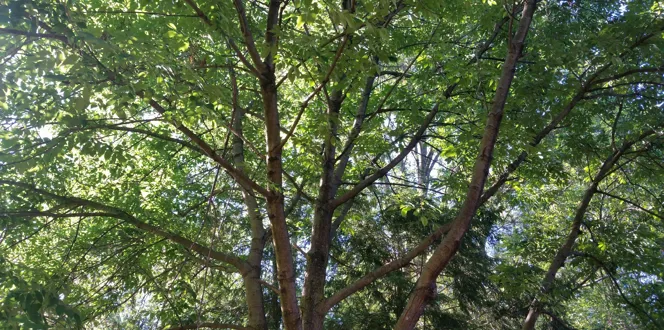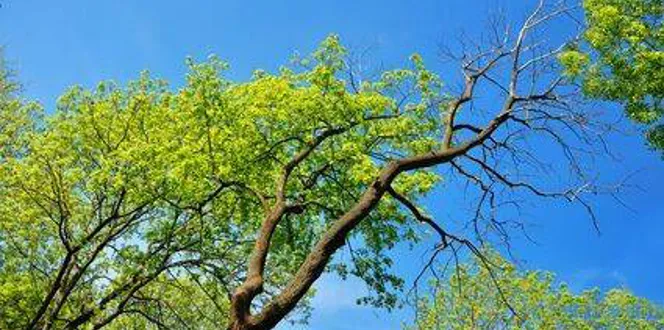Have you noticed a recent increase of woodpecker activity in your yard? Are they targeting one tree or several similar looking trees? If that’s the case and you live in an area with a known EAB infestation, your trees may be infested by this insect.
EAB is an invasive species that targets ash trees. Ash trees can be identified by opposite branches, or branches that grow directly across from one another, and compound leaves, or leaves that have more than one leaflet. They are commonly found in the Midwestern and Eastern United States; however, they may grow in the southeast and the front range as well as parts of the West Coast.
A Davey blog reader reached out to ask if all ash tree species were susceptible to this pest and if the borer prefers younger trees or more mature ones. If you think your trees are vulnerable to EAB, continue reading to learn about the signs and how to control this pest.
How Susceptible Are My Ash Trees to EAB?
First things first, native borers prefer stressed trees. However, since EAB is a non-native invasive borer, healthy ash trees are vulnerable to the species too. It’s best to proactively lookout for the signs of an EAB infestation and treat your trees before it’s too late.
EAB prefer all ash tree species except the mountain ash as a host. The insect is not attracted to mountain ash trees because they are not “true” ash trees and are, in fact, part of the rose family.
Emerald Ash Borer (EAB) Control Tips & Tricks
EAB is spread through ash wood products, infested ash trees and plantings, ash wood packaging material, wood debris and trimmings, including chips, and firewood. The phrase “buy local, burn local” infers that you should not move firewood from one location to another, rather buy firewood from a source and keep it in its community. EAB larvae can also hide in the bark of firewood, so avoid moving pieces of firewood you suspect are infested.
How does EAB affect mature trees?
While EAB tends to prefer trees over a certain age, the population of ash trees has declined so much that it will go after any trees, regardless of age. No matter the age, when a tree is infested with EAB, it loses the ability to transport water and nutrients, resulting in dieback and bark splitting. Visible symptoms to look out for include:
- Yellow, thin, or wilted foliage
- Unusual woodpecker presence and pecking holes
- D-shaped beetle exit holes
- Shoots growing from the roots or a tree’s trunk, often with larger-than-normal leaves
- Thinning or dying tree crowns
- Suckers at the base of the trees
Mature trees may last three to four years after being infested with EAB.
How does EAB affect young trees?
While symptoms of an infested tree are the same for mature and young trees, small trees are killed within one to two years because they are more sensitive to infestations and aren’t strong enough to fight them for long periods of time.
If you spot symptoms of emerald ash borer, take action today! Have a certified arborist inspect your trees for an official diagnosis and determine if your tree is a candidate for treatments.
Your state agricultural agency is also a great resource, with information on state and federal regulations and the quarantines in your area. Also, if you receive ash nursery stock or firewood, know its point of origin and your supplier.





